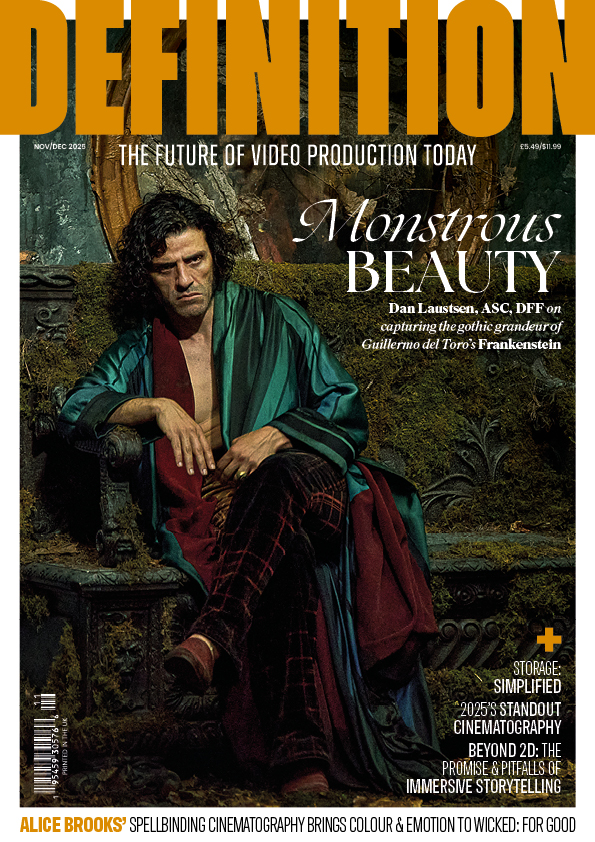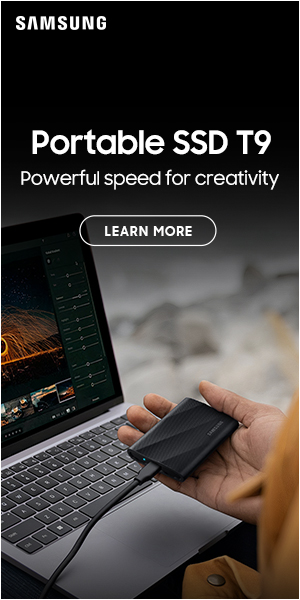
Testing the latest film gear: Reference monitors
Posted on Aug 18, 2025 by Admin
The latest gear, tried & tested in the field
Welcome to TEST SPACE, our new review series that puts kit into the hands of real DOPs in real-world production environments for a tried and tested appraisal that you can trust. Each month, our panel of working cinematographers will put a carefully selected product through its paces, sharing honest, useful feedback on how it performs under the pressures of an actual shoot.
To launch the series, we asked Joshua Ighodaro to test three different reference monitors across a variety of workflows. With nearly a decade of experience in the camera department on blockbuster features like The Marvels and The Batman, Josh has since made his mark as a cinematographer on other acclaimed shorts and music videos. His recent work includes the documentary Red Soil, nominated at Aesthetica Short and Norwich Film Festivals, the Sony-backed sci-fi short Hestia and Cannes-screened The Return of the Screw. Currently working on a feature film due to shoot later this year, Josh knows exactly what’s needed from gear on set.
Over the course of his testing, Josh worked with the Flanders Scientific XMP270 QD-OLED, EIZO ColorEdge CG2700X and Atomos Sumo 19SE – each offering distinct strengths and aimed at different parts of the market. He evaluated build quality, image fidelity, workflow integration and everyday usability: on the pages ahead, you can read his insights into where each monitor shines, who they’re best suited for and whether they’re worth the investment when you’re building your kit!
Atomos Sumo 19SE
Joshua Ighodaro touts the Sumo 19SE’s capabilities for exposure monitoring and helping to streamline workflows
Tested during an LUT and lens shootout for an upcoming feature film, the Atomos Sumo 19SE proved itself a reliable and flexible monitor in both controlled test environments and exterior daylight conditions. Working with an ARRI ALEXA Mini, shooting 3.2K ProRes 4444 XQ at 25fps, the Sumo was connected via 3G SDI to deliver high-quality image feedback. Lenses included ZEISS Super Speeds Mk III and vintage Astro-Berlin Pan-Tachars, offering a strong test of the monitor’s colour accuracy and image handling under varied lighting – from indoor tungsten to bright sunlight.
Right out of the box, the Sumo 19SE makes a good impression. It’s solid but relatively lightweight, and while the 1920×1080 HDR touchscreen is the only interface aside from the power button, it’s responsive and intuitive, with a smartphone-style UI that will feel familiar to most users. Boot-up takes under five seconds, and the layout of the main control interface makes it easy to toggle between essential tools like waveform, vectorscope and false colour. A simple tap of the yellow ‘Mon’ button brings up the overlay toggles, the Home icon clears them and a quick press of the power button locks the touchscreen to prevent any accidental adjustments.
The monitor ships with tabletop feet, but lacks a standard stand mount. While it’s sturdy enough to survive on set without a protective case, a stand mount and outer shell could be advisable for long-term use. The screen size and brightness make it equally useful in both studio and field environments.
Image fidelity is a strong point for the Sumo 19SE. Colour accuracy appears solid, with HDR support and Atomos’ own AtomHDR system allowing compatibility with various camera HDR formats. Rec. 709 is available for standard workflows, and you can also easily load in your own custom looks.
Sharpness is adequate for monitoring and lighting work, though focus pullers might find it lacking compared to higher-resolution alternatives. That said, higher-res alternatives are typically quite a bit more expensive, while the Sumo comes in at a pretty affordable £1773.
Brightness is rated at 1200 nits, which was sufficient even in bright outdoor conditions – but particularly good in shade. When using it in direct sunlight, a hood or monitor tent is advisable.
One of the standout features is the ability to record up to 6K ProRes Raw via external drives. This makes the Sumo more than just a preview monitor: it can serve as a backup recorder or on-set reference tool for continuity supervisors and directors.
Take-tagging and XML export features are especially useful for time-conscious productions, allowing useful notes to be captured and exported with each take.
The included scopes and exposure tools (false colour, zebra, vectorscope, waveform) work well, but some lack deeper customisation. Focus peaking, for example, allows you to change colour and size but not intensity; something that more advanced users might find limiting.
The Sumo 19SE slots smoothly into a multicam workflow, with four SDI inputs (but only one output) and additional HDMI in/out and sync ports for audio. It’s a plug-and-play solution that can handle a range of production roles, from lighting reference to continuity playback.
The unit runs cool even after hours of continuous use thanks to two internal fans, but the fan noise is noticeable in very quiet environments, so it’s best kept clear of the sound department. Power options are flexible, with an AC adapter and dual four-pin 14v XLR inputs, compatible with both block batteries and standard mains. There’s no top handle included, which slightly hinders portability, but generous 3/8in and 1/4in mounting points make rigging options diverse.
The Atomos Sumo 19SE is a smart, capable monitor well-suited to directors, cinematographers and continuity teams. The robust build, intuitive interface, strong image reproduction and on-board recording make it a valuable addition for any medium- to large-scale production. While not ideal for focus pulling, its strengths in multicam support, workflow integration and exposure monitoring more than make up for it and make it a standout in its class. It’s a worthy upgrade and a serious tool for professional use.
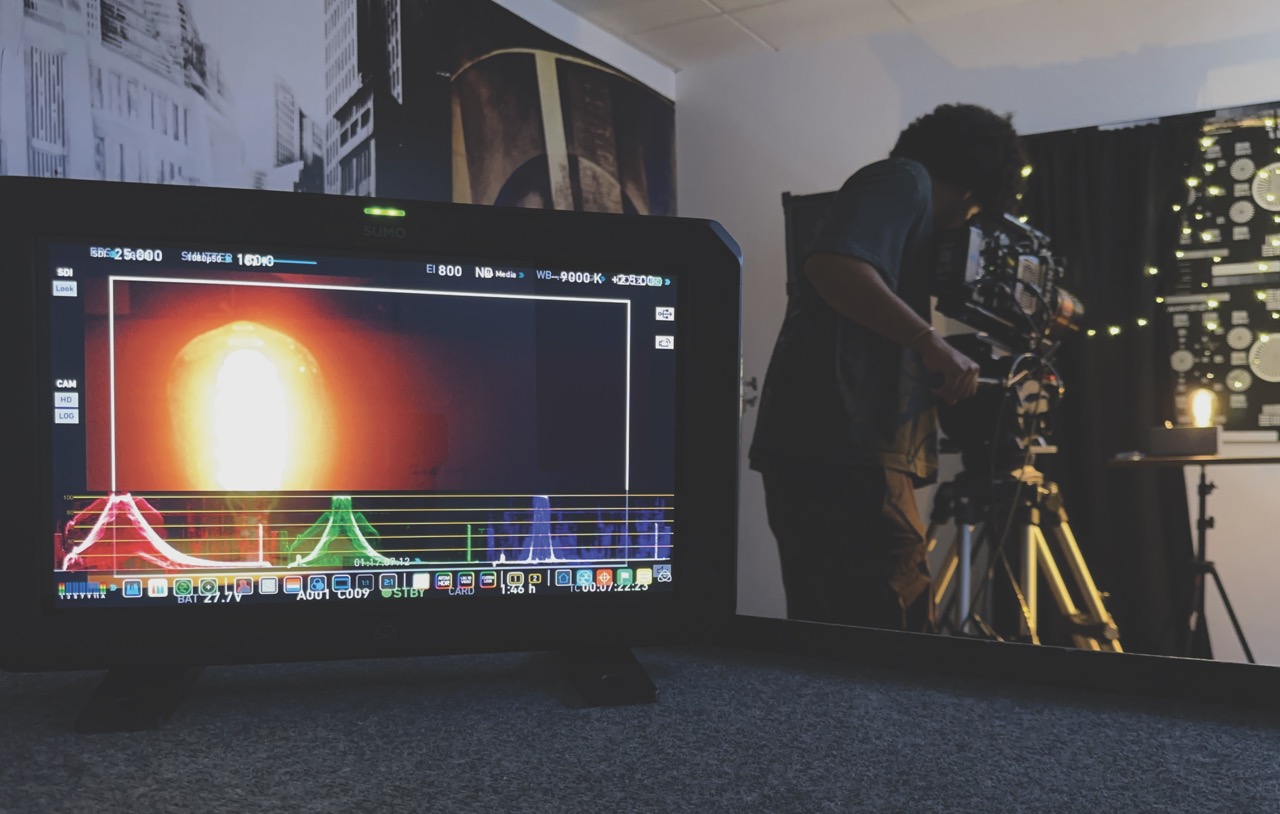
Flanders Scientific QD-OLED XMP270 Reference Monitor
Tested in pre-production for a feature film, this monitor proves its mettle in studio and controlled environments
While prepping for my next feature, I had the opportunity to test a Flanders Scientific reference monitor as part of a comprehensive lens and workflow trial. The set-up was split between an indoor test room, with tungsten and LED fixtures, and natural daylight exteriors. Gear included an ARRI ALEXA Mini running 3.2K ProRes 4444 XQ at 24fps, feeding video out via 3G SDI to the monitor, which was powered by a standard block battery. I cycled through a solid range of Cooke S4/i primes (14 through 150mm) and ZEISS Super Speeds Mk III (25, 35, 50, 85mm), ensuring I tested the monitor across a variety of looks and optical characteristics.
Straight out of the box, the monitor makes a strong case for quality, with a build that feels premium. The buttons are tactile and satisfying, and it ships with a handy screen protector. Boot-up time is a quick ten seconds, and I was viewing a colour-accurate image in under 20. The menus are clean and intuitive, requiring no manual diving just to get rolling.
The large screen real estate made studio viewing a breeze, and inclusion of both a stand-mounting bracket and tabletop feet was appreciated – though I’d opt for a stand. While clearly robust in build, I’d hesitate to throw it into rugged, on-location work without investing in a flight case. It isn’t flimsy, but it’s not quite throw-it-in-a-bag rugged either.
The monitor’s colour accuracy was spot on – impressive – and fully confirmed by the included factory calibration report. For lighting reference, exposure judging and overall colour fidelity, it’s rock solid, while for UHD monitoring, sharpness is spot on, as it’s mapped pixel for pixel without scaling. However, sharpness was somewhat lacking when monitoring an HD signal full screen. If you’re pulling critical focus in HD, activating the monitor’s 1:1 pixel mapping shows you the exact HD signal for focus-critical applications. If you’re monitoring HD exclusively, you might want to consider a native HD monitor like FSI’s 16in DM160 OLED.
At 1000 nits, it handled interior work comfortably. But outside – especially under direct sun with only light cloud cover – it wasn’t as bright as I would like it to be. Flanders Scientific has a custom snap-on hood for the XMP270 coming out very soon, but it wasn’t available yet during my testing. For prolonged outdoor use, the new custom hood, a tent or a courtesy flag will be essential.
In terms of on-board tools, the monitor ticks most boxes. The vectorscope and waveform were reliable and helped reinforce lighting and exposure decisions. False colour, monochromatic view and RGB channel isolation are also present – though in my workflow, I tend to defer to the camera’s built-in tools for those tasks. Still, it’s good to know these options are there and well-implemented.
One of the more forward-thinking features is its array of I/O options: 4x 12Gbps SDI in/out and monitor out. While I didn’t use them all during testing, I could immediately see the potential for multicamera shoots, where quick source switching becomes vital. This makes workflow integration seamless, whether you’re on a traditional single-camera shoot or a multicamera behemoth.
Compared to other reference monitors I’ve worked with – TVLogic, SmallHD and Sony – the Flanders sits comfortably in the DIT and lighting reference lane. It’s not trying to be everything for everyone. It’s a professional-grade exposure and colour tool; not a director’s preview monitor or a 1st AC’s sharpness check. And in this lane, it truly excels.
Heat management is excellent. It remained cool through an eight-hour day and made no noise thanks to a fanless design. It ships with a three-pin 24v XLR cable and AC adapter, letting you power it from block batteries or mains with no fuss. There’s also support for adding battery plates, making it semi-viable for run-and-gun scenarios.
That said, it’s a little bit cumbersome. While it’s lighter than similar high-end HDR monitors, the size and lack of top handle do make it harder to transport solo. You’ll want to plan for dedicated cases and mounting set-ups, like FSI’s MRTPlate, if you’re frequently moving locations.
The Flanders Scientific XMP270 won’t win awards for versatility or compactness, but that’s not what it’s for. This is a solid tool for lighting, exposure and DIT work in controlled environments. If you’re working with a crew that understands its strengths, it’s a worthy investment. For any DOP, gaffer or DIT wanting dependable, colour-accurate performance in studio or tented set-ups, this monitor will excel.
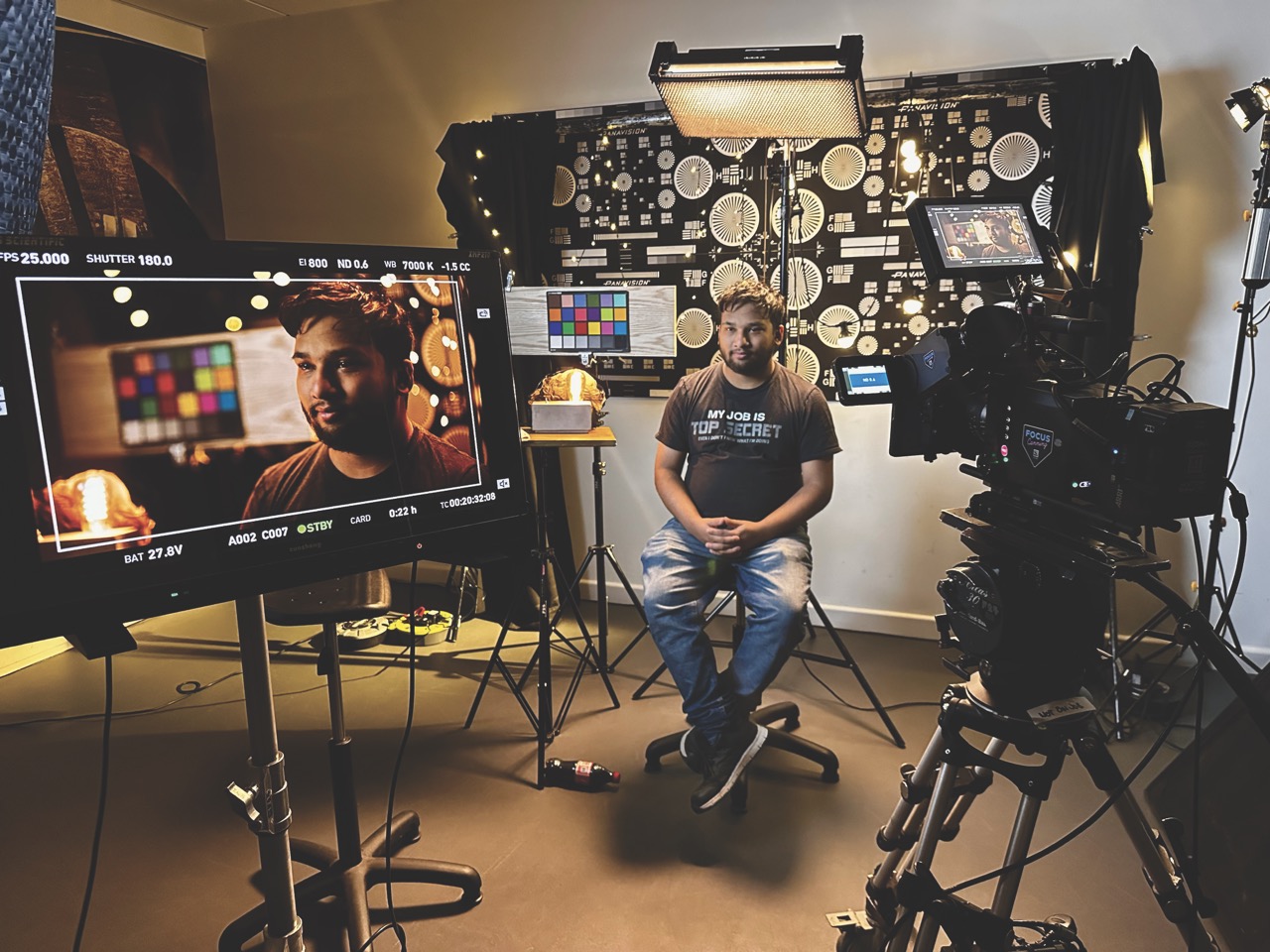
EIZO ColorEdge CG2700X
The ColorEdge CG2700X from EIZO boasts reliability and performance right out of the box
Tested during a lens and LUT test for an upcoming feature, the EIZO ColorEdge CG2700X monitor proved itself an exceptional tool for colour-critical workflows. Operating in both a controlled test room with lighting set-ups, as well as in natural daylight conditions, the CG2700X was paired with an ARRI ALEXA Mini outputting 3.2K ProRes 4444 XQ via HDMI (a separate monitor was used to provide HDMI output). With lenses ranging from ZEISS Super Speeds to Astro-Berlin Pan-Tachars, the monitor’s fidelity was put through a range of visual challenges, and handled them with confidence.
The CG2700X immediately positions itself as a high-end desktop monitor. Its almost honeycomb-style rear panel isn’t just a nice design choice, but also serves a functional purpose, improving passive airflow without needing a fan. The result is a near-silent device that stays cool under pressure, even in warmer conditions.
The 27in 4K UHD HDR display is vivid, razor-sharp and calibrated for serious colour precision. It comes pre-mounted on a height-adjustable stand, which is ideal for ergonomic set-ups in editing suites or grading rooms. The minimalist interface includes eight touch-sensitive buttons beneath the screen: quick and responsive, though those who prefer tactile feedback might miss having physical controls.
Start-up is nearly instant (under five seconds) and the menu system is clean and logical, with key access to signal, colour, preferences and the standout feature: self-calibration. This is where the CG2700X sets itself apart. Featuring a built-in calibration probe and 3D LUT-based engine, the monitor delivers exceptional neutral greys and overall colour fidelity.
The probe can also be automated on a schedule, which eliminates the need to send the unit away to get third-party calibration. This feature alone makes it a compelling choice for professionals who rely on having consistency across different long-form projects.
The monitor’s colour reproduction is world-class. The CG2700X covers:
- 98% of the DCI-P3 colour space (standard in digital cinema)
- 99% of Adobe RGB (critical for photographers and VFX artists)
- Support for BT. 2020, ensuring it has future-proof compliance with broadcast HDR standards
HDR support includes hybrid log-gamma (HLG), which enhances dynamic range while preserving a naturalistic look that mirrors human vision. This is a vital feature when delivering content for HDR-enabled displays.
At 4K UHD resolution, the sharpness is exceptional – fine enough for high-end post work and detailed retouching. The 500cd per sq m brightness and HDR gamma support provide ample control in even the most demanding grading scenarios. Whether you’re working on glossy commercial footage or subtle narrative tones, this monitor lets you dial in with confidence.
Connectivity is generous too: DisplayPort, HDMI and multiple USB ports (USB 3.1 Gen 1 and USB 2.0) support a range of peripherals and workstations. The monitor’s thoughtful thermal design ensures it remains cool and quiet even during prolonged use, making it ideal for editing suites or shared post facilities where ambient noise can be an issue.
Let’s be clear – the CG2700X isn’t meant to be a field monitor, nor should it be. It’s aimed at the digital imaging, post-production and photography markets, and excels in these spaces. With its built-in calibration tools, wide colour gamut, exceptional sharpness and understated-yet-elegant design, it’s difficult to find a monitor that offers this level of reliability and performance right out of the box.
If you’re a colourist, VFX artist, editor or photographer, the EIZO ColorEdge CG2700X is a top-tier investment that delivers on its promise of visual precision and workflow confidence. For those who live in the details – it’s a no-brainer!
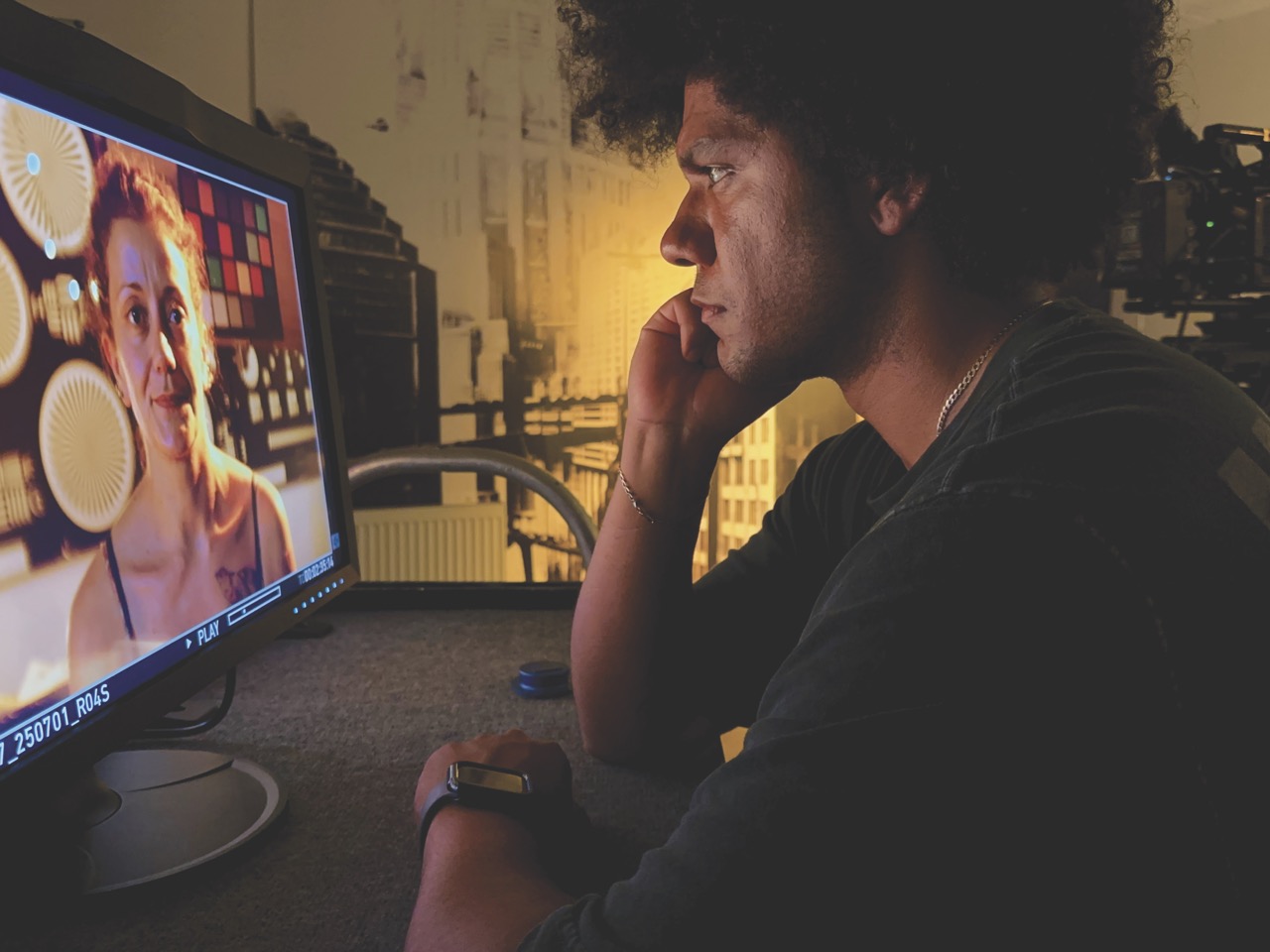
This article appears in the July/August 2025 issue of Definition




